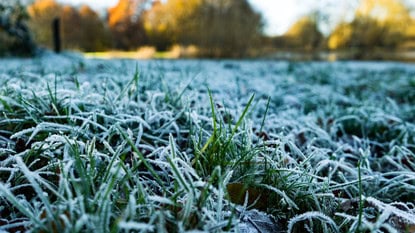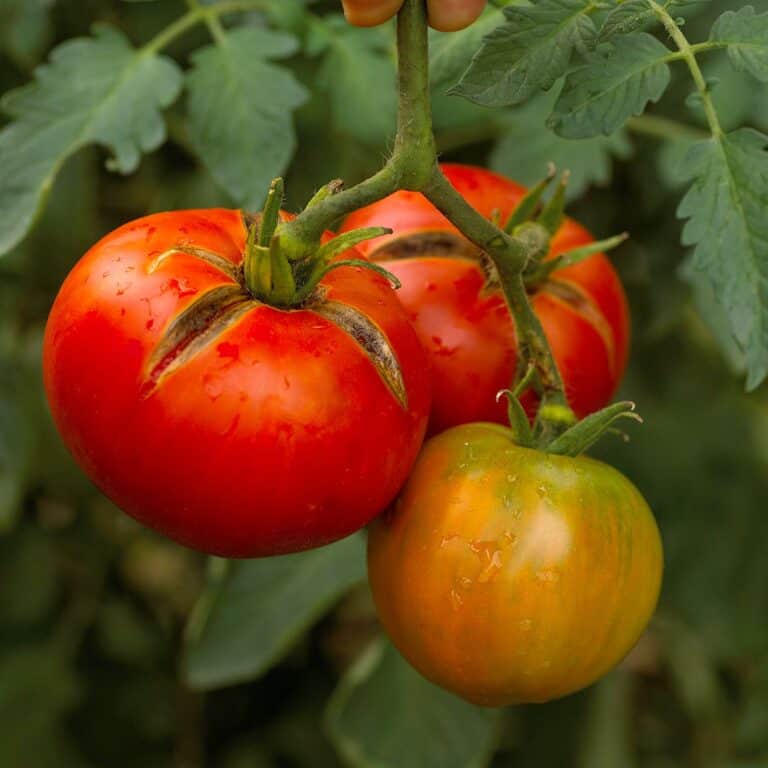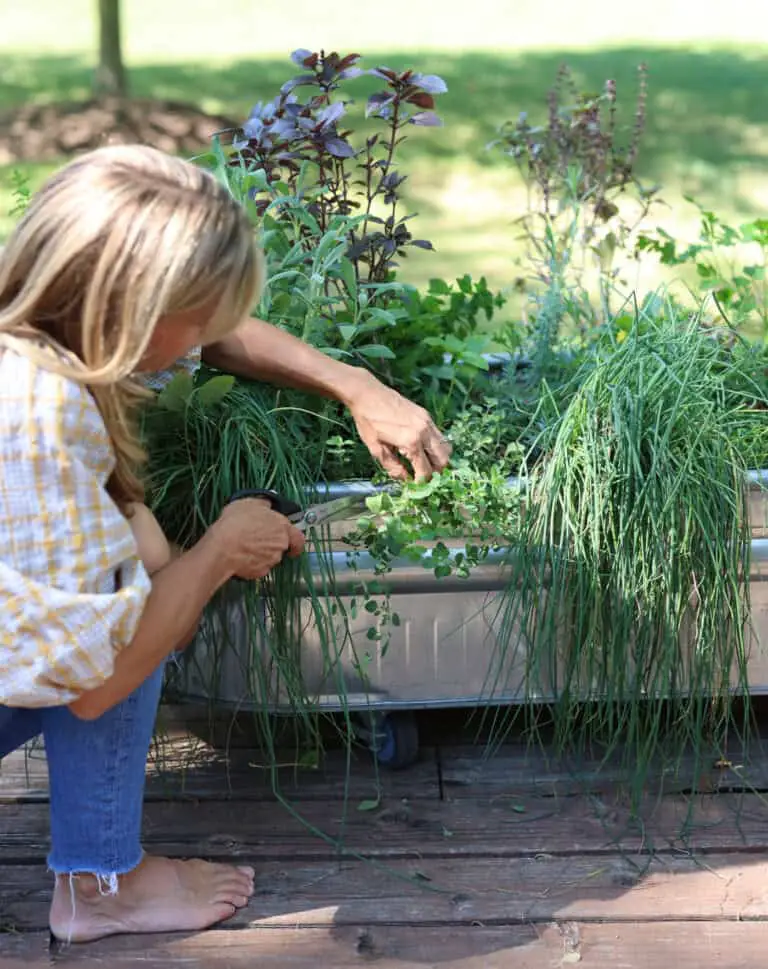Essential Garden Jobs I am Carrying Out Before Winter Arrives: Must-Do Tasks
I am pruning dead branches and mulching garden beds. These tasks prepare my garden for winter’s harsh conditions.
Preparing your garden for winter is crucial. Pruning dead branches prevents disease and encourages healthy growth in spring. Mulching garden beds protects plant roots from freezing temperatures. Clean up fallen leaves and debris to avoid pests. Planting winter-hardy vegetables extends your harvest season.
Covering delicate plants with frost cloths shields them from frost damage. Drain and store garden hoses to prevent freezing. These essential tasks ensure your garden remains healthy and vibrant. Proper winter preparation leads to a thriving garden come spring. Don’t neglect these important steps to maintain your garden’s beauty and productivity year-round.
Preparing The Soil
As the air grows colder, it’s time to prepare the garden soil. By focusing on soil health, your garden will thrive when spring arrives. Let’s dive into the essential tasks for soil preparation.
Clearing Debris
First, start by clearing debris from your garden beds. Remove fallen leaves, dead plants, and other organic waste. This helps prevent pests and diseases from overwintering in your garden. Use a rake to gather leaves into piles.
- Remove dead plants
- Collect fallen leaves
- Dispose of any weeds
Dispose of the debris in a compost pile or yard waste bin. This keeps your garden clean and ready for the next steps.
Adding Compost
After clearing debris, it’s time to add compost to your soil. Compost enriches the soil with nutrients and improves its structure. Spread a layer of compost over your garden beds.
| Compost Type | Benefits |
|---|---|
| Homemade Compost | Rich in organic matter |
| Store-Bought Compost | Easy and convenient |
- Spread compost evenly
- Use a garden fork to mix it in
- Ensure a depth of 2-3 inches
This step prepares the soil for winter, ensuring it retains moisture and nutrients.
By following these steps, your garden soil will be healthy and ready for the next growing season.

Credit: www.facebook.com
Pruning Plants
Pruning plants is essential before winter arrives. It helps keep the garden healthy. Proper pruning also promotes new growth in spring. Below are some important pruning tasks you should do.
Trimming Shrubs
Trimming shrubs keeps them neat and healthy. Always use clean, sharp tools. Follow these steps for effective shrub trimming:
- Identify damaged branches.
- Cut branches at a 45-degree angle.
- Trim back to a bud or branch.
Be careful not to over-trim. Too much trimming can harm the plant. Trim just enough to shape the shrub. This prepares it for the winter months.
Cutting Back Perennials
Perennials need cutting back before winter. This helps them grow better in spring. Follow these steps to cut back perennials:
- Use sharp pruning shears.
- Cut stems close to the ground.
- Remove any dead or diseased foliage.
Don’t cut back evergreen perennials. They need their leaves to survive winter. Only cut back perennials that die back naturally.
| Plant Type | Pruning Time | Pruning Method |
|---|---|---|
| Shrubs | Late Fall | Trim back to a bud or branch |
| Perennials | Early Fall | Cut stems close to the ground |
Pruning plants is a key garden job before winter. It keeps your garden healthy and ready for the next season.
Protecting Vulnerable Plants
As winter approaches, protecting vulnerable plants becomes crucial. Cold weather can damage delicate plants. Here are some essential steps to safeguard your garden’s greenery.
Using Mulch
Mulch acts as a protective blanket for plants. It helps retain soil moisture and regulates temperature. Spread a thick layer of mulch around the base of your plants. This will insulate the roots from the cold. Organic mulch, like straw or wood chips, works best. Avoid piling mulch against the plant stems. This can cause rot.
| Type of Mulch | Benefits |
|---|---|
| Straw | Excellent insulation, easy to spread |
| Wood Chips | Long-lasting, improves soil structure |
| Leaves | Readily available, decomposes into rich soil |
Covering With Fabric
Covering plants with fabric shields them from frost. Use breathable materials like burlap or frost cloth. Avoid using plastic as it traps moisture. Secure the fabric around the plant with stakes or rocks. Remove the cover during the day to let in sunlight. Re-cover plants at night for protection.
- Burlap: Durable, reusable, and breathable
- Frost Cloth: Lightweight, provides excellent frost protection
- Old Sheets: A cost-effective option for small plants
Protecting vulnerable plants ensures they thrive through winter. These simple steps help keep your garden healthy.
Harvesting Late Crops
As winter approaches, it’s vital to gather the last crops. This ensures you enjoy fresh produce even during colder months. Let’s explore the key tasks involved in harvesting late crops.
Collecting Vegetables
Start by picking all the remaining vegetables from your garden. Here is a quick list of vegetables you might collect:
- Carrots
- Beets
- Brussels sprouts
- Kale
- Leeks
Use a sharp knife or scissors to cut vegetables. Ensure you harvest before the first frost. This keeps the produce fresh and tasty.
Storing Harvest
Proper storage is key to enjoying your harvest for months. Here are some tips for storing your vegetables:
| Vegetable | Storage Method |
|---|---|
| Carrots | Store in sand or sawdust |
| Beets | Keep in a cool, dark place |
| Brussels Sprouts | Refrigerate in a plastic bag |
| Kale | Blanch and freeze |
| Leeks | Store in damp sand |
Label your stored vegetables with dates. This helps you use the oldest produce first. Keep a list of stored items for easy tracking.
Planting Winter Vegetables
Winter vegetables are essential for a thriving garden during the colder months. Planting them now ensures a continuous harvest. Let’s explore how to get the most from your winter garden.
Choosing Hardy Varieties
Choose vegetables that thrive in cold weather. These varieties can withstand frost and low temperatures. Here are some excellent options:
- Kale – Resilient and nutritious, perfect for winter salads.
- Brussels Sprouts – Grow well in winter, improving their flavor.
- Carrots – Sweeten after a frost, making them a winter favorite.
- Spinach – Hardy and fast-growing, ideal for winter gardens.
These vegetables are hardy and offer a continuous supply of fresh produce.
Spacing And Planting
Proper spacing is crucial for healthy plants. Crowded plants may not grow well. Here are some general spacing guidelines:
| Vegetable | Spacing Between Plants |
|---|---|
| Kale | 18 inches |
| Brussels Sprouts | 24 inches |
| Carrots | 3 inches |
| Spinach | 6 inches |
Follow these guidelines to ensure each plant has room to grow. Dig holes according to the specific needs of each plant. Place seeds or seedlings gently into the holes. Cover with soil and water thoroughly.
With these tips, your winter garden will be productive and healthy.
Cleaning Garden Tools
One essential garden job before winter is cleaning garden tools. Clean tools work better and last longer. They also prevent spreading plant diseases. Below are steps to get your tools ready for winter.
Sharpening Blades
Sharp blades make clean cuts. This helps plants heal faster. Use a sharpening stone or file. Follow the angle of the blade. Make sure you sharpen both sides evenly.
Sharpen pruners, shears, and lawnmower blades. Wear gloves for safety. Clean the blades with a wire brush first. This removes dirt and rust. After sharpening, wipe the blades with a clean cloth.
Oiling Moving Parts
Oiling moving parts reduces friction. It prevents rust and makes tools work smoothly. Use machine oil or WD-40. Apply oil to hinges, springs, and bolts.
Wipe off excess oil with a cloth. This keeps dirt from sticking. Regular oiling extends the life of your tools. Store tools in a dry place. This prevents rust from moisture.
| Tool | Action |
|---|---|
| Pruners | Sharpen blades, oil hinges |
| Shears | Sharpen blades, oil hinges |
| Lawnmower | Sharpen blades, clean deck |
- Sharpening improves cutting efficiency.
- Oiling prevents rust and friction.
- Storing tools in a dry place is crucial.
- Clean tools with a wire brush.
- Sharpen the blades carefully.
- Oil all moving parts.
- Store tools in a dry area.
Maintaining Garden Structures
As winter approaches, it’s time to prepare our gardens. This includes maintaining garden structures to withstand the harsh weather. I focus on repairing fences and cleaning greenhouses to ensure everything is in top shape.
Repairing Fences
Inspect your fences for damage. Look for loose or broken boards. Replace any damaged sections immediately. Use weather-resistant nails and screws. Apply a fresh coat of paint or sealant. This helps protect against moisture and rot. Here are some key steps:
- Check for loose boards.
- Replace broken sections.
- Use weather-resistant fasteners.
- Apply protective paint or sealant.
Cleaning Greenhouses
Greenhouses need a thorough cleaning before winter. Remove all plants and debris. Wash windows to maximize light. Clean shelves and pots with a mild disinfectant. Ensure proper ventilation to prevent mold growth. Here are the steps to follow:
- Remove plants and debris.
- Wash windows.
- Clean shelves and pots.
- Ensure proper ventilation.
| Task | Materials Needed |
|---|---|
| Repairing Fences | Hammer, nails, paint |
| Cleaning Greenhouses | Disinfectant, cloth, water |
By maintaining garden structures, you can protect your garden from winter damage. Keep your garden ready for spring with these simple tasks.

Credit: www.hollywoodreporter.com
Organizing The Shed
Before winter arrives, organizing the shed is essential. A tidy shed helps you find tools quickly. It also protects them from winter damage. Let’s dive into how to make your shed winter-ready.
Storing Tools
Properly storing tools is a must. First, clean each tool. Remove dirt, rust, and grime. Use a brush for scrubbing. Rinse with water and dry thoroughly.
- Sharpen Blades: Keep blades sharp for spring. Use a sharpening stone.
- Oil Metal Parts: Prevent rust with a light coat of oil.
- Hang Tools: Use hooks and racks. This saves space and keeps tools off the floor.
Labeling Supplies
Labeling supplies makes finding items easier. Start with bins and boxes. Use labels for each container.
| Item | Label |
|---|---|
| Seeds | Spring Seeds |
| Fertilizers | Plant Food |
| Gloves | Gardening Gloves |
Label shelves too. Use a label maker or stickers. Clear labels help everyone find things faster.
Planning For Next Season
Winter is on the horizon, and my garden needs preparation. A crucial task is planning for the next season. This ensures a beautiful and productive garden come spring. I focus on two main areas: reviewing the garden layout and ordering seeds.
Reviewing Garden Layout
First, I assess my current garden layout. I note what worked well and what didn’t. This helps me make informed decisions for next season.
- Identify successful plant placements: I observe which plants thrived in their spots.
- Spot problem areas: I look for areas where plants struggled.
- Consider sunlight and shade: I check where sunlight hits throughout the day.
After gathering this information, I draw a new layout plan. This plan incorporates my observations and aims to maximize plant health and yield.
Ordering Seeds
With a new layout in mind, I start ordering seeds. I review my garden goals and select seeds accordingly.
- Make a list of desired plants: I list vegetables, flowers, and herbs I want to grow.
- Research seed varieties: I look for varieties suited to my climate and soil.
- Check seed inventory: I see what seeds I already have and their viability.
I order seeds early to get the best selection. This also gives me time to plan germination schedules.
| Plant | Variety | Order Status |
|---|---|---|
| Tomato | Heirloom | Ordered |
| Carrot | Nantes | In Stock |
| Rose | Climbing | Ordered |
Seed ordering is a fun part of garden planning. It brings excitement for the new season.

Credit: www.facebook.com
Frequently Asked Questions
What Garden Tasks Are Crucial Before Winter?
Pruning, mulching, and cleaning up fallen leaves are essential tasks. They protect plants and prepare the garden for winter.
How To Protect Plants From Frost?
Cover plants with burlap or frost cloth. Mulch around their bases to insulate roots and retain moisture.
Why Is Mulching Important In Winter?
Mulching helps retain soil moisture, regulates temperature, and prevents soil erosion. It also adds nutrients to the soil.
Conclusion
Preparing your garden for winter ensures a healthy and vibrant space next spring. Tackle essential tasks now to protect plants and soil. Regular maintenance helps your garden thrive year-round. Keep these tips in mind, and you’ll enjoy a flourishing garden season after season.
Happy gardening and see you in the spring!







